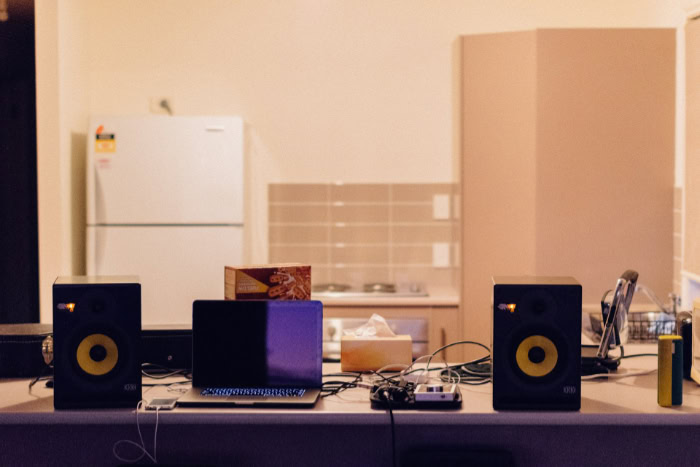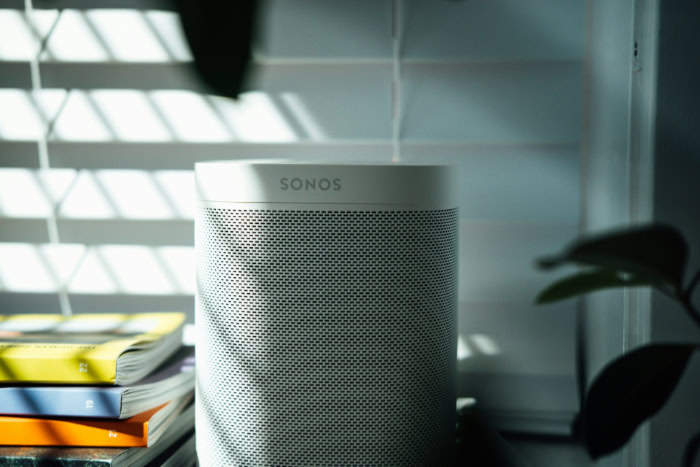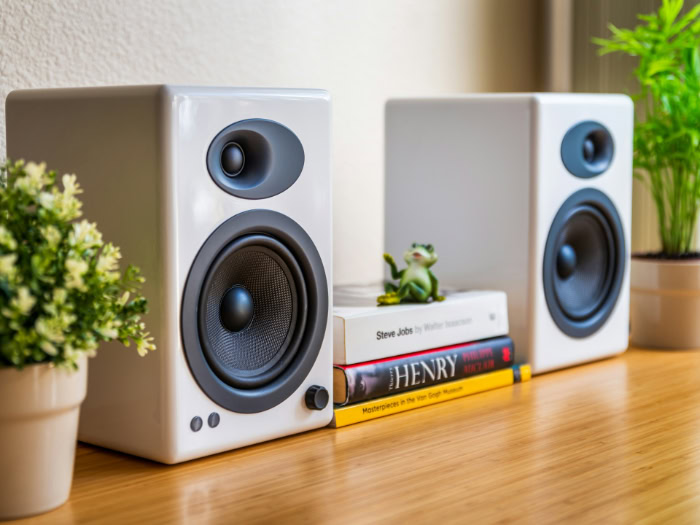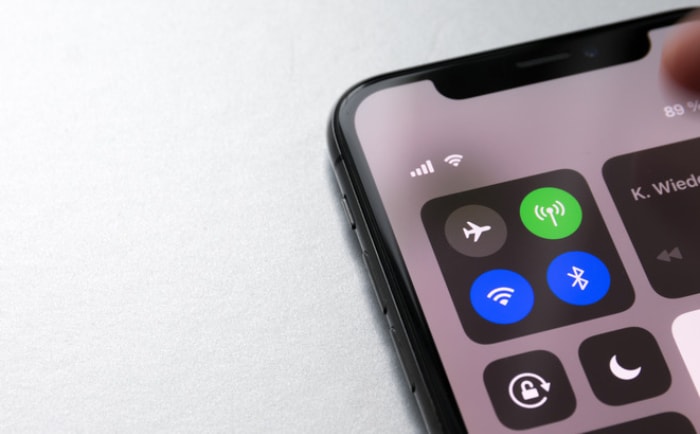Wireless vs. Wired Speakers: The Trade-Offs Explained

Setting up an audio system forces a decision between two distinct philosophies. One path prioritizes pure signal integrity and raw performance, using physical cables to ensure every note and sound effect arrives without compromise.
This is the traditional wired route, favored for its reliability and unmatched fidelity. The other path embraces flexibility and smart integration, cutting the cord for a tidy look and the freedom to position speakers anywhere.
Wireless systems have matured significantly, offering high-quality sound over Wi-Fi and effortless control for multi-room listening. Your final decision will rest on how you balance sound quality against ease of use, and how your system fits into your home and lifestyle.
Sound Fidelity and Formats
The conversation about sound quality is central to the wired versus wireless speaker debate. A wired connection has long been the benchmark for audio purists due to its direct, unaltered signal path.
However, wireless audio technology has advanced dramatically, making the distinction less about which is better and more about which is right for a specific use case. The quality of your listening experience depends on the connection type, the source of your audio, and your own listening priorities.
The Baseline for Audio Fidelity
A wired connection provides a direct physical link from your audio source to your speakers, delivering an uncompressed signal that maintains the full integrity of the original recording. This method is inherently stable and free from the potential data loss associated with wireless transmission.
In contrast, wireless audio quality varies by technology. Wi-Fi based systems can transmit lossless, high-resolution audio streams, effectively matching the quality of a wired connection for most practical purposes.
Bluetooth functions differently, using codecs to compress and decompress the audio signal. While modern Bluetooth codecs have improved significantly, some level of compression is often involved, which can lead to a subtle loss of detail compared to a pure, uncompressed wired or Wi-Fi signal.
How Your Audio Source Affects Quality
The components that make up your audio system play a large role in the final sound. Wired setups offer the flexibility to introduce dedicated external amplifiers or digital-to-analog converters (DACs), allowing enthusiasts to upgrade and customize their sound.
This modular approach is ideal for those who want to fine-tune their system's performance over time. Wi-Fi speakers often integrate directly with high-resolution streaming services, pulling music straight from the internet for a clean signal path.
With Bluetooth, the sound quality is a product of the entire chain; it depends on the source device, the speaker's capabilities, and the specific codec supported by both.
Matching Audio Quality to Your Listening Style
Your personal listening habits should guide your choice. For critical listening sessions where every subtle detail matters, or for systems designed to play at high volumes without distortion, a wired setup remains the standard for many audio enthusiasts.
The reliability and uncompressed signal provide a dependable foundation for high-performance sound. For more casual situations, such as background music, podcasts, or creating a synchronized whole-home audio experience, modern Wi-Fi speakers deliver excellent sound quality that will satisfy the vast majority of listeners.
They successfully narrow the performance gap while providing far greater convenience.
Latency and Synchronization

Audio delay, or latency, is a critical factor when sound must align perfectly with on-screen action. For listening to music alone, a slight delay is unnoticeable.
However, for home theater and gaming applications, even a small lag between what you see and what you hear can become a significant distraction. The choice between a wired and wireless system has a direct effect on how well your audio synchronizes with visual media, and it is an important element to consider for your setup.
Impact on Television and Movies
A wired audio connection offers a near-zero delay, ensuring that dialogue and sound effects are perfectly synchronized with the video on screen. This instantaneous transmission is why cabled systems are a reliable choice for home theaters.
Wireless speakers, particularly those using Bluetooth, can introduce a small amount of latency because the signal must be encoded, transmitted, and decoded. This delay can result in a noticeable lip-sync issue, where an actor’s mouth moves just before you hear their words.
The effect is most apparent during scenes with heavy dialogue or fast-paced action, potentially breaking the immersion of a film or TV show.
Ensuring Responsiveness in Gaming
For gamers, audio latency can affect more than just immersion; it can impact performance. In competitive or fast-paced games, auditory cues like footsteps or weapon sounds provide vital information, and even a millisecond of delay can be a disadvantage.
Rhythm-based games depend entirely on precise timing, making low latency a requirement for enjoyable play. A wired connection is often favored by serious gamers to eliminate any possibility of audio lag.
If a wireless setup is preferred, one with a carefully tuned low-latency audio chain is necessary to preserve the essential timing cues for responsive gameplay.
Methods for Reducing Audio Delay
If you experience synchronization problems with a wireless system, there are several ways to correct them. Many modern televisions, streaming devices, and AV receivers include a lip-sync or audio delay setting in their menus.
This feature lets you manually adjust the timing to realign the audio and video. You can also prioritize wireless technologies built for speed, such as certain Wi-Fi protocols or Bluetooth codecs specifically designed for low latency.
Finally, routing your sound through a stable, buffered audio path can help minimize artifacts and improve overall synchronization, especially in multi-room speaker groups.
Setup, Placement, and Power
The practical considerations of integrating speakers into your home are just as important as their sound quality. How you plan to install, position, and power your speakers directly influences your room’s aesthetics and functionality.
Wired and wireless systems present different challenges and advantages in this area, affecting everything from initial installation complexity to the flexibility you have in arranging your living space.
Comparing Installation Effort
A traditional wired audio system requires a significant amount of planning and physical work. The process often involves running long lengths of speaker cable from an amplifier or receiver to each speaker.
To achieve a clean look, these cables may need to be concealed under carpets, along baseboards, or even routed through walls and ceilings, which can be a complex and permanent installation. In contrast, wireless speakers dramatically simplify setup.
In most cases, you just need to unbox the speaker, place it, and plug it into a power outlet. Connecting it to your audio source is done through a Wi-Fi network or a direct Bluetooth pairing, a process that usually takes only a few minutes.
This simplicity also makes it easy to move speakers or reconfigure your setup later.
Balancing Aesthetics and Speaker Placement
Wireless speakers offer a distinct advantage for interior design by eliminating the visual clutter of speaker wires. This freedom allows for a clean, minimalist look and opens up more options for speaker placement, as you are not physically tethered to an audio receiver.
However, it is important to remember that most wireless speakers are not entirely wire-free; they still require a power cord connected to a nearby electrical outlet. This detail influences where you can realistically place them and may require some creative cable management to keep power cords hidden.
The only exceptions are smaller, battery-powered models, which offer true placement freedom but often come with compromises in sound output and performance.
Understanding Speaker Portability
Portability varies greatly between different types of wireless speakers. Bluetooth speakers are the champions of on-the-go audio.
Their ability to connect directly to a single device like a smartphone makes them perfect for taking to the park, the beach, or simply moving around the house and yard. Wi-Fi speakers, while also wireless, are better understood as relocatable home speakers.
They are designed to operate on a home network and often provide superior sound quality and features like multi-room synchronized playback. While you can easily move a Wi-Fi speaker from the living room to the kitchen, its reliance on your network’s signal makes it unsuited for use away from home.
Connectivity, Range, and Ecosystems

Beyond the initial setup, the way your speakers connect to your devices and to each other defines how you will interact with them daily. The underlying technology dictates their functional range, signal reliability, and ability to integrate into a larger smart home environment.
While a wired connection is straightforward, wireless options like Bluetooth and Wi-Fi offer distinct user experiences, each with its own set of strengths and limitations.
Connection Types and Coverage Area
The two primary wireless technologies, Bluetooth and Wi-Fi, operate on different principles. Bluetooth creates a direct, short-range link between a source device and a single speaker.
Its typical range is around 30 feet, making it ideal for personal audio where the source device stays close to the speaker. Wi-Fi, by contrast, connects speakers to your home’s computer network.
This gives them a much larger operating range, limited only by the reach of your Wi-Fi signal. The higher bandwidth of a Wi-Fi connection also allows for higher-quality audio streams and enables features like synchronized multi-room playback, where multiple speakers play the same audio without any delay.
Connection Reliability and Stability
A wired connection is the most reliable option, as it is immune to the wireless interference and network congestion that can affect other systems. The stability of a Wi-Fi speaker system depends entirely on the quality of your home network.
A strong, uncongested Wi-Fi network will provide a stable and consistent connection, but performance can suffer if multiple devices are competing for bandwidth or if the signal is weak in certain areas of your home. Bluetooth is generally more susceptible to interference from physical objects like walls and from other wireless devices operating on the same frequency.
Its signal can drop or stutter if you move the source device too far from the speaker.
Smart Features and Integrated Control
Modern Wi-Fi speaker systems offer a host of smart features that are not typically found in wired or Bluetooth setups. These systems are often managed through a dedicated smartphone app that provides advanced control over playback, equalization, and speaker settings.
A major feature is the ability to group speakers, allowing you to play music in different rooms simultaneously or create a stereo pair from two separate units. Many Wi-Fi speakers also include built-in voice assistants, like Amazon Alexa or Google Assistant, which enables hands-free control over your music and integration with other smart home devices.
Cost, Value, and Upgrade Paths
Your budget and long-term audio goals are significant factors in the decision between wired and wireless speakers. The initial purchase price is only one part of the equation; the true value of a system also lies in its performance for the price, its potential for future expansion, and how well it can adapt to your needs over time.
Both wired and wireless approaches offer different value propositions that are important to weigh before you invest.
Evaluating Price-to-Performance Ratio
When it comes to pure audio performance per dollar, wired systems traditionally hold an advantage. With separate components, your investment is focused primarily on the quality of the speakers, amplifiers, and other audio hardware.
A significant portion of the cost of wireless speakers, however, is allocated to the integrated technology, including the wireless radios, built-in amplification, and the software that makes them work. This often means that for a comparable price, a passive wired speaker may feature higher-quality drivers and cabinet construction than its all-in-one wireless counterpart.
You are often paying a premium for the convenience, smart features, and simplified setup that wireless systems provide.
System Expandability and Future Upgrades
Wired audio systems are inherently modular, offering a clear and flexible upgrade path. You can improve your setup one piece at a time, perhaps starting with a good pair of speakers and a modest receiver, and then upgrading the amplifier or adding a high-end DAC later.
This ability to swap individual components allows your system to evolve with your tastes and budget. In contrast, most wireless speakers are self-contained, all-in-one products.
While you can expand the system by adding more speakers to other rooms, you generally cannot upgrade the internal hardware. If a new technology emerges or you desire a significant boost in performance, the upgrade path typically involves replacing the entire speaker unit.
Implementing Hybrid Strategies
You do not have to commit exclusively to one approach. A hybrid system can offer a practical and effective compromise, blending the strengths of both wired and wireless technologies.
For example, in a home theater setup, you could use high-fidelity wired speakers for your front left, right, and center channels, where sound quality and precise imaging are most critical. You could then use wireless speakers for the rear surround channels, eliminating the need to run long cables across the room.
This strategy combines the performance of a wired connection for your primary listening experience with the installation flexibility of wireless for secondary or less critical speakers.
Conclusion
The choice between wired and wireless speakers comes down to a clear set of priorities. A wired setup excels for users who value absolute audio fidelity, precise timing for movies and games, and the long-term flexibility to upgrade individual components.
It remains the top choice for dedicated listening rooms and high-performance home theaters. On the other hand, a wireless system offers unmatched convenience, aesthetic freedom, and powerful smart features.
For whole-home audio, background music, and easy integration into a modern household, a robust Wi-Fi speaker system is difficult to beat. By mapping your primary activities to these trade-offs, you can confidently select the system that best aligns with your listening habits and lifestyle.


